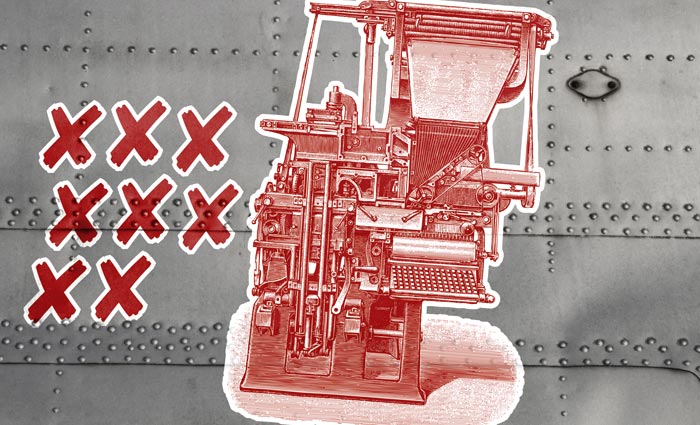
A bulb and bellows has a bulb, which goes into the metal and then a capillary tube that goes to a bellows that operates a switch.
Linotype metal has to be kept between 525 and 550 degrees Fahrenheit. On the bulb and bellows, it has the bulb in the metal and the bellows going to a switch on the side of the pot and when the heat gets up to 550, it switches off and when it drops to 525 it switches on again.
When I was in the Air Force, they had the same bulb and bellows on the Wirraway aeroplane. Instead of having a short capillary tube, the tube was eight feet long and had to be put through the fuselage and up to the heat control instrument. One of the first jobs I had in the Air Force was to put one of these into an aeroplane. The sergeant just handed me a bulb and bellows and said: “Go and put that in that Wirraway up there in the hangar.”
He didn’t show me how to do it and I reckon it was only my experience that enabled me to do the job without breaking it. The capillary tube has to be handled very carefully. Anyway I put that in and then every time there was a capillary breakdown in an aeroplane, I had this job to do. They called me out when I was in the picture show one night, they even got me up at 12 o’clock one night to do it. I reckon it was my experience with the electric pots of the linotype that enabled me to do it.
Alan Phillips
Print’s Past excepts are drawn from interviews held by Benjamin Thorn, curator of the Armidale Museum of Printing, and are due to be published in a forthcoming book.
Comment below to have your say on this story.
If you have a news story or tip-off, get in touch at editorial@sprinter.com.au.
Sign up to the Sprinter newsletter
